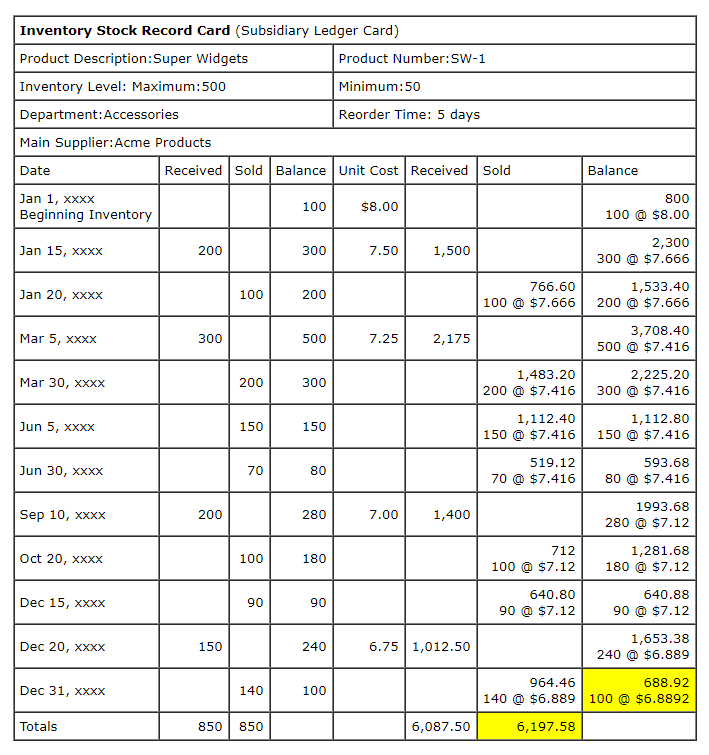LIFO-Decreasing
Costing Methods
LIFO Calculations Using the Perpetual and Periodic Inventory System

Decreasing Prices
LIFO - Last-in First-out
Now we're going to take a look at the LIFO Costing Method used with the Perpetual and Periodic Inventory Methods during a period of decreasing prices.
LIFO with the Perpetual Inventory Method
The following information about our product Super Widget will be used to illustrate the calculations involved using the Periodic and Perpetual Inventory Methods with the LIFO Costing Method (Cost Flow Assumption).
Our Schedule of Purchases and Beginning Inventory
- Beginning Inventory is made up of 100 units with a cost per unit of $8.00 for a total cost assigned of $800.00.
- Purchases of Super Widget made during the year are as follows:
Date Quantity Unit Cost Extended Cost Invoice Number Supplier
January 15, xxxx 200 $7.50 1,500 A-976123 Acme Products
March 5, xxxx 300 $7.25 2,175 7898000 Alternate Products
September 10, xxxx 200 $7.00 1,400 A-999999 Acme Products
December 20, xxxx 150 $6.75 1,012.50 B-789012 Acme Products
Total Purchases 850 6,087.50
Our Stock Record Card (Subsidiary Ledger Card) for Super Widgets assuming a LIFO Cost Flow appears below:

Yes, those yellow highlighted balances represent our Cost Of Goods Sold and Ending Inventory amounts at the end of our period.
LIFO with the Periodic Method
Our Schedule of Purchases and Beginning Inventory
- Beginning Inventory is made up of 100 units with a cost per unit of $8.00 for a total cost assigned of $800.00.
- Purchases of Super Widget made during the year are as follows:
Date Quantity Unit Cost Extended Cost Invoice Number Supplier
January 15, xxxx 200 $7.50 1,500 A-976123 Acme Products
March 5, xxxx 300 $7.25 2,175 7898000 Alternate Products
September 10, xxxx 200 $7.00 1,400 A-999999 Acme Products
December 20, xxxx 150 $6.75 1,012.50 B-789012 Acme Products
Total Purchases 850 6,087.50
Working forward (from the oldest to the newest) from our schedule or search and analysis of our beginning inventory and invoices, our first oldest or earliest purchase is represented by our Beginning Inventory. By chance, the beginning balance is made up of 100 units with a unit cost of $8.00.
We lucked out. Since we only need to find the unit cost for 100 units from our count and that make up our Ending Inventory, the Beginning Inventory unit cost of $8.00 per unit is the only unit cost we need to assign cost to our units on hand and remaining in Inventory.
All our Super Widgets (100 in inventory) are assigned a unit cost of $8.00 resulting in an Ending Inventory Value of $800.00 (100 units @ $8.00).
Using the data from our Schedule, the calculation of the cost assigned to our units sold (Cost Of Goods Sold) is straight forward.
Beginning Inventory $800.00 100
Purchases $6,087.50 850
Total Cost and Units To Account For $6,887.50 950
Costs Assigned to Cost Of Goods Sold
Cost Of Goods Sold Calculation: Dollars Units
Total Dollars and Units To Account For $6,887.50 950
Less: Costs and Units Assigned To Ending Inventory 800.00 100
Costs and Units Assigned To Cost Of Goods Sold $6,087.50 850

What's Next ?
Average-Rising Prices
